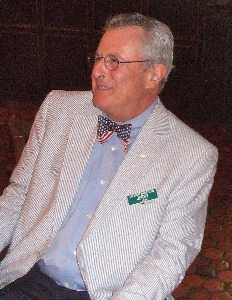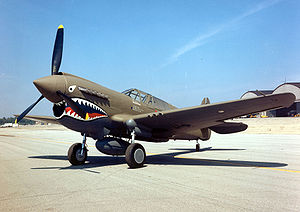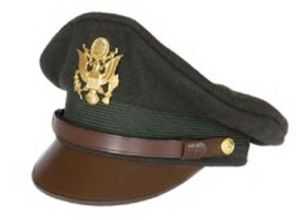Related Topics
George Washington in Philadelphia
Philadelphia remains slightly miffed that Washington was so enthusiastic about moving the nation's capital next to his home on the Potomac. The fact remains that the era of Washington's eminence was Philadelphia's era; for thirty years Washington and Philadelphia dominated affairs.
Right Angle Club 2010
2010 is coming to a close, a lame-duck session is upon us, and probably after that will come two years of gridlock. But the Philadelphia Men's Club called the Right Angle, keeps right on talking about the current scene. A few of these current contents relate to speeches given elsewhere.
Favorites - II
More favorites. Under construction.
Killer Instinct

|
| Jerry Leon |
Once every year or two, a speaker at the Right Angle Club fails to show up. That happened recently, and as usually happens, one of the members stood right up to the microphone and gave an impromptu speech. The volunteer was Jerry Leon, who surprised us all by announcing he spent thirteen years in the Marines as a fighter pilot on aircraft carriers. You would never guess that from his behavior as a successful businessman, and to some extent that was his whole point.
In the first place, he volunteered as a Marine during the Korean War, and worked his way through boot camp and all that, until one day an officer brought them all to attention, asking for volunteers to fly airplanes. After flight training school, he might have flown air freight or eight-engine bombers, but he volunteered to fly fighter planes off the deck of an aircraft carrier. In those days, the carrier plane was fired by a steam driven catapult off the flight deck like a projectile. You go from zero speed to two hundred miles an hour in two or three seconds; the experience is arresting. After he recovers his wits, the pilot is expected to take sole control of the plane, fly around the carrier a few times, and then land the plane on the postage stamp flight deck. Fighter planes come in at a lower altitude than commercial aircraft, and steeper, and faster. The tailhook catches one of the three wires across the deck, and then the plane jolts to a stop. Or not, in which case the pilot must retake immediate control, take off at full speed, circle the carrier, and try it again. That's hard enough on a calm sea, but the Navy never stops for rough weather, so at night in rough seas, you have to do it in the dark with the ship rising, falling, pitching and yawing, right or left in three dimensions. That's somewhat harder. There are usually four planes in the air at any one time, all doing the same thing every ninety seconds, and if the plane runs off the end of the landing strip the pilot must remember to eject before he goes down with the plane. This whole process must be repeated six times in one day with only one aborted landing, in order to qualify for carrier duty. Saying nothing of the sudden bumps and jolts, the process of qualifying is pretty hard on the sphincters, it's pure terror no matter who you are. Like stage fright for an actor, crash landing does seem easier with practice but having done it seven hundred times, Jerry still wasn't able to do it calmly.

|
| P40 War Hawk |
Unusually good eye/hand coordination is something you are born with, and baseball seems to require the same ability. Ted Williams, the famous .400 hitter for the Boston Red Sox, was an outstanding fighter pilot, and many less famous professional baseball players have also gravitated to the role. To be called a fighter ace a pilot must have shot down five enemy planes, and one pilot became a fighter ace at the Battle of Midway on his first mission. Because of his lack of experience, this pilot was only detailed to hunt for the battleship Yamamoto, but he found it, radioed its location, and on the return flight ran into 30 enemy planes. Tearing into them alone, he shot down five, becoming an ace before he returned to the carrier deck from his first mission. Now there's the killer instinct with eye/hand coordination, the combination which seems to make you an ace. He wasn't alone in these qualities, although 30% of the pilots do seem to account for 90% of the victories. In those days "between W-2 and Korea" the American pilots were flying propeller planes, while the Chinese pilots were flying jets, and even the Germans were flying some jet-powered Messerschmidts. That's five hundred miles an hour versus seven hundred, and the enemy planes would often swoop past in a whoosh. So, the Americans developed a technique. When the jet came up on your tail, you pulled back as hard as you could with all flaps down. The enemy jet pilot had to pull up his nose, flew over the top of the propeller-driven American, and then was blasted out of the air by the prop plane now waiting for him from behind. They say it worked every time, but of course, it only worked for the pilots who came back to talk about it. A former pilot with Chenault once told the story of letting go with fifty-caliber machine guns into the tail of a Zero, causing the Zero and its pilot to vanish into a puff of smoke and debris. Of course, the prop plane then just flew through the cloud.

|
| Pilot's Hat |
The fly-boys were of course chased by hordes of women, particularly in the bars around the training school in Pensacola. They drank hard, at reckless heedless parties; it was reported that Australian pilots even had two or three drinks before taking off, but our Navy strictly policed going that far. Nobody saved any money, nobody cared one whit about being promoted or demoted. Getting to be an Admiral was something that attracted what were disdainfully referred to as "politicians". And nobody bragged about his exploits, even to friends and family. What mattered was that word of mouth had carried your exploits to your buddies. The senior George Bush flew a bomber not a fighter plane, but he played baseball like an angel, and you never heard him boast of his adventures; that's a fair approximation of the personality type, although George Bush was unusually tall for a pilot, and clearly better bred. If you can't guess what he thought of Bill Clinton and Ross Perot, it isn't necessary to relate it here.
Somehow, feminist women intruded themselves into this fraternity, and some who seemed well-qualified got hustled along through token promotions. But few women have the real killer instinct, and just getting equal opportunity won't get you through those six gut-wrenching flights in a carrier qualification. Thirteen women pilots were killed in qualification flights before the Secretary of the Navy intervened and put a stop to it. To new entrants from a previously shunned group, achieving the same status as men is a form of promotion, and lusting for promotion is despised by natural-born fighter pilots. It's sort of a Catch-22 situation. What killers want, is to excel at things that are viciously dangerous, getting the esteem of others who tried to do as much and maybe failed; like tournament golf, in this game, you are really playing against yourself. And so this Greek tragedy finally came to a confused pause with the famous Tailgate party incident. To preserve appearances and rescue The Service from the press corps, the Navy brass was shocked, shocked, to discover what was going on. Women weren't being respected if you can believe such a thing of fly-boys.
"Hey, fellas, c'mon. Do you want to win this war or don't you? Professional killers have been behaving like this for centuries. And because you come along, we've got to change and do things your way?"
Originally published: Friday, July 16, 2010; most-recently modified: Wednesday, May 22, 2019